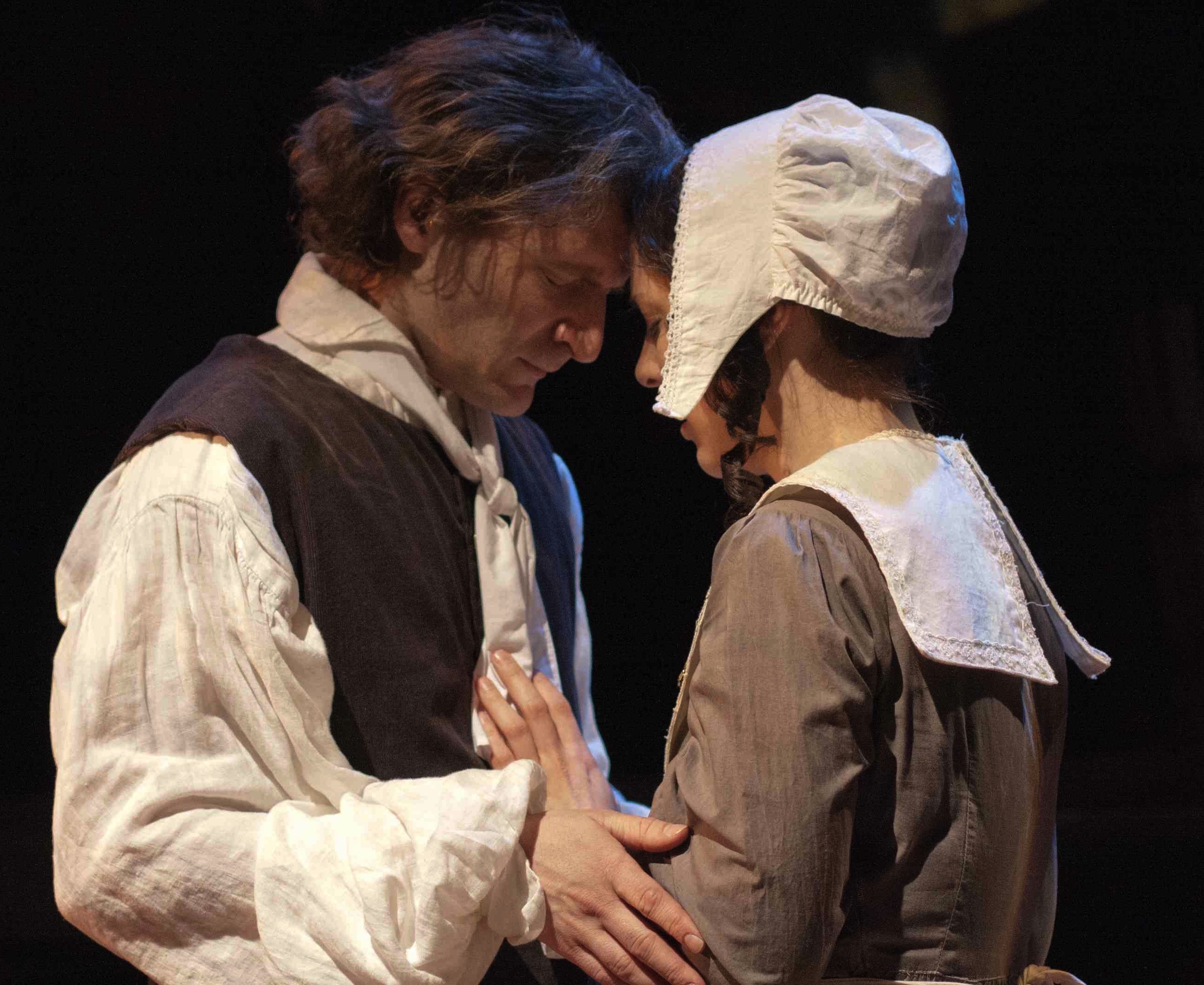SALT LAKE CITY — My first experience with The Scarlet Letter Is likely similar to that of many: it was required reading for English class my junior year of high school. Unlike the rest of my class who were all bored to tears at just the thought of cracking a book more than ten years old, I started Nathaniel Hawthorne‘s novel and couldn’t put it down. The image of a stoic Hester Prynne—her embroidered “A” almost proudly pinned to her breast, standing tall and refusing to name her lover and share her shame—still haunts me. Was Hester interested in making things easier on herself? No. She acted strongly, willfully; she acted out of love.
Jennifer Nii‘s new adaptation of The Scarlet Letter is presently in its world premiere run at Plan-B Theatre Company. Nii’s script is wonderfully taut; she has done an amazing job of paring the novel down to its most essential moments. I was pleasantly surprised to see that the script employs only four characters: Hester (Lauren Noll), Dimmesdale (David Fetzer), Chillingworth (Mark Fossen), and Hester’s daughter Pearl (Claire Wilson). I found that I didn’t miss any of the other residents of 1650’s Boston; rather, I was more invested in and intrigued by the four I needed to know. Nii’s language is simple and muscular; she doesn’t let scenes drag, nor is her text troubled by anachronysms. I understood and believed every line as true to the novel, the period, and the characters.
Hester Prynne has always struck me as a very contemporary character, a woman both of her time and beyond it. Lauren Noll’s portrayal embodies that timelessness; I don’t know if I can describe it properly other than to say she is just the right kind of feisty. Her Hester is fiercely protective of both her daughter and her privacy, at the same time that she does not shirk responsibility for her supposed sin. This Hester doesn’t wallow; she looks ahead, and she survives.
I’ve always felt that haunted minister Arthur Dimmesdale is one of literature’s greatest cowards. David Fetzer, however, makes Dimmesdale a creature to be pitied rather than loathed. Fetzer’s Dimmesdale is fragile in spirit and body, torturing himself nearly to death with guilt. I understand Dimmesdale better than I have before, seeing him now as a man torn between fulfilling his calling and redeeming his own soul, rather than as a simple coward.
I enjoyed how casual and yet conniving Mark Fossen’s Roger Chillingworth is in his pursuit of the truth, trying to get to the heart of Hester and Dimmesdale’s secrets; I liked that I was never quite sure of his intentions.
As Pearl, Claire Wilson impresses, capturing the impish wisdom of a 7-year-old at the same time showing flashes of the woman Pearl will one day become. While I enjoyed Wilson’s performance, I was curious about the casting of a 15-year-old as a child who is in actuality much younger; Wilson is nearly as tall as her on-stage mother Noll and, except for bookend moments at the top and bottom of the show, she plays Pearl as a youngster. If I was unfamiliar with the novel I think I would have been confused by this choice, and to a certain extent I was—almost enough to take me out of the story at once or twice.
Cheryl Ann Cluff keeps the production simple and streamlined, much like Nii’s script. She is aided in this effort by Jesse Portillo‘s subtle, natural lighting and Phillip R. Lowe‘s somber period costumes. Randy Rasmussen‘s set incorporates shadows and levels that could belong at any given time to a pulpit or a pillory.
In addition to directing, Cluff designed the sound, giving a voice and presence to the unseen citizens of Boston in a cloud of gossipy whispers. The best application of this came for me right at the beginning of the play, when a crowd has gathered to witness Hester’s public humiliation, murmuring things like “hussy” and “whore.” Later on the same technique is used to emphasize Dimmesdale’s guilt and self-loathing in two separate moments; however, the whispers that worked so well early on seem to take on more of a creepy, supernatural tone later that I found distracting. Cluff explores and illuminates Nii’s adaptation just enough; the story is told both well and succinctly, allowing the audience to both feel and appreciate the weight of it without beign bogged down.
It is a heavy tale, after all, that could easily go on for too long. But Nii’s script and Cluff’s pacing present Hester’s story in a more than manageable 75 minutes. If only my eleventh grade English class could experience this story in a way that they would—and should—appreciate.







